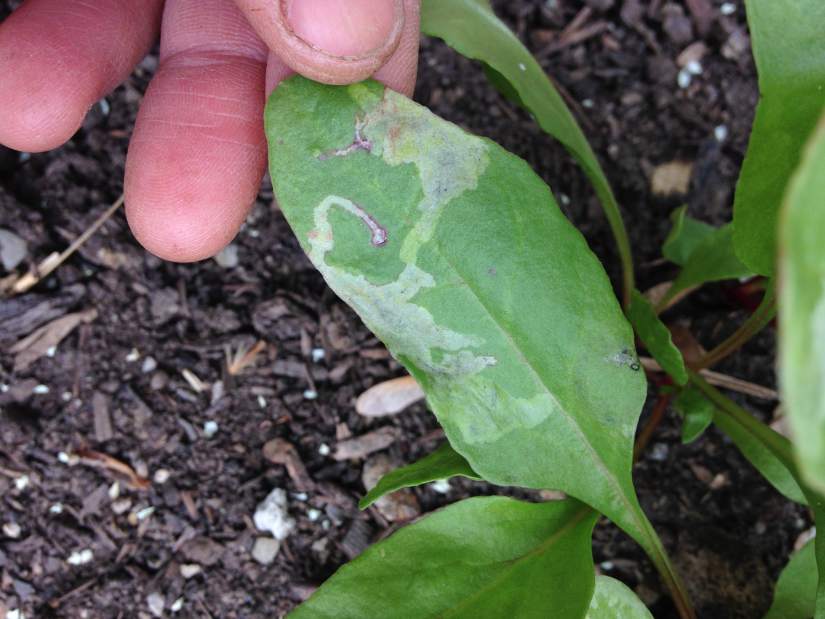https://archive.triblive.com/news/leafminer-damage-can-be-avoided-with-floating-row-covers-in-spring/
Leafminer damage can be avoided with floating row covers in spring

Jessica Walliser
Leafminer damage on a young beet seedling
Question: I was wondering if you could possibly help with a gardening question. Every time I grow spinach, it gets white splotches all over the leaves. It looks like someone spilled bleach on them. Any idea of the cause?
Answer: Spinach is one of several plants in the family Amaranthaceae that we commonly grow as vegetables. This family also includes beets, Swiss chard, quinoa and lambs quarters. Members of this vegetable group are prone to damage from spinach leafminers ( Pegomya hyoscyami), and the white splotches you describe are a classic indication of this pest.
Spinach leafminers emerge from their winter pupation in late spring. The adult flies are very small, only about a third of an inch. After breeding, the females lay tiny eggs on the leaf undersides of these crops. A few days later, the eggs hatch and burrow into the leaf surface and begin to tunnel through the soft tissue inside.
As they excavate between the layers of the leaf and consume the inner tissue, white splotches appear. (Feeding by a similar leafminer species, the vegetable leafminer, causes squiggly lines between the leaf layers, rather than splotches.) These larval flies continue to feed for a month or so before dropping out of the plant and pupating in the soil. Spinach leafminers are active from mid-May through mid-August. There are several generations per year.
Most plants are able to withstand quite a bit of damage, and it's mostly an aesthetic issue as far as plant health is concerned. But when the salad bowl is involved, it goes from aesthetic damage to a more serious problem. Spinach and chard plants with significant damage are not only unattractive, they're also inedible.
The best way to control leafminers is to prevent them from attacking in the first place. Always rotate your crops so emerging adults will have a more difficult time finding their host plant. And, immediately after planting susceptible crops, cover them with a floating row cover and leave it in place until the day of harvest. This lightweight fabric rests on top of the plants and prevents the adult leafminer flies from gaining access to the plants to lay their eggs.
Floating row cover is available from most local garden centers and can be reused for many years.
Another way to prevent leafminer damage on Swiss chard and beets is to hold off on planting seeds of these crops until early June so they'll come up after the female leafminers have ceased laying eggs. There will still be plenty of time for the crop to mature. For spinach, plant seeds in mid to late August and overwinter them in the garden by covering them with floating row cover or a cold frame. Come spring, the spinach will be up and growing and ready to harvest before the leafminers even emerge from their winter pupation.
Horticulturist Jessica Walliser co-hosts “The Organic Gardeners” at 7 a.m. Sundays on KDKA Radio with Doug Oster. She is the author of several gardening books, including “Attracting Beneficial Bugs to Your Garden: A Natural Approach to Pest Control” and “Good Bug, Bad Bug.” Her website is jessicawalliser.com.
Send your gardening or landscaping questions to tribliving@tribweb.com or The Good Earth, 503 Martindale St., Third Floor, D.L. Clark Building, Pittsburgh, PA 15212.
Copyright ©2025— Trib Total Media, LLC (TribLIVE.com)
